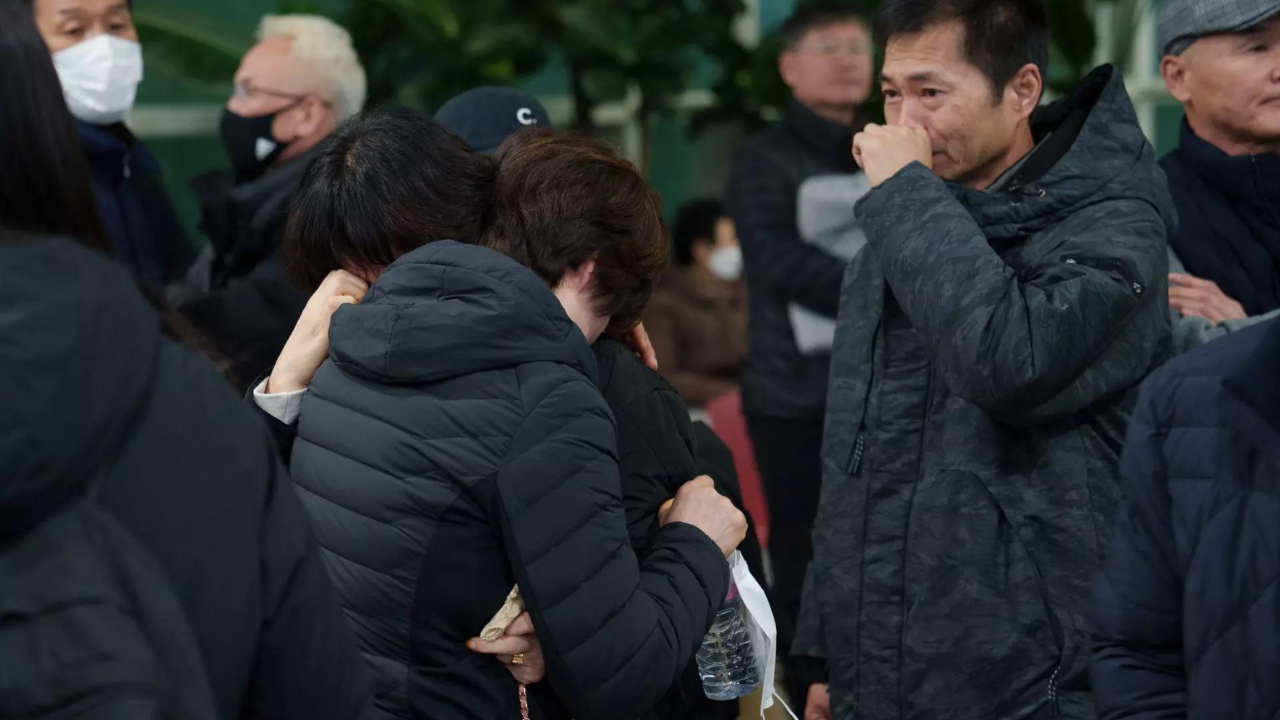Jeju Air Crash: A Heartbreaking Tragedy and the Long Road to Identification
The recent Jeju Air crash at Muan International Airport has left a nation in mourning. With 179 fatalities and only two survivors, this devastating air disaster is one of South Korea's deadliest. The aftermath, however, is proving even more agonizing for grieving families as they endure a heartbreaking wait for the identification and release of their loved ones' remains. This article will delve into the challenges of victim identification, the emotional toll on grieving families, and the ongoing investigations into the cause of the crash.
The Painstaking Process of Identification
The sheer devastation of the crash makes identification of the victims a tremendously difficult task. The majority of the bodies are severely damaged, forcing authorities to rely on DNA analysis and fingerprints. The National Forensic Service (NFS) is working tirelessly, but even with their best efforts, preliminary DNA results won't be available until January 8th. This agonizing delay adds to the already unbearable emotional burden for families, many of whom are forced to wait in makeshift tents at Muan International Airport, praying for news. One heartbroken grandmother, quoted in Korea Times, lamented, "We can't even hold a funeral until next Wednesday. My grandchild hasn't been identified yet." Imagine the sheer despair of these families, forced to wait days, even weeks, before they can properly grieve and lay their loved ones to rest.
The Emotional Toll on Grieving Families
The emotional toll on the families is immeasurable. Witnessing the devastation at the airport, families grapple not only with the loss of their loved ones but also the immense uncertainty about the future. The heartbreaking scenes of families weeping outside the airport entrance are a reminder of the immense personal tragedy at the heart of this incident. For those waiting to identify their relatives, this means confronting the heart-wrenching possibility that they may only be able to identify fragments of their beloveds' remains. Their stories, as heartbreaking as they are, highlight the need for better communication and care for those caught in such a harrowing situation. Supporting these families through such a trauma requires ongoing emotional care and understanding beyond the realm of bureaucracy. It calls for community support and long-term care to aid them through their grieving journey.
Interim Handovers and Identification Challenges
South Jeolla Provincial Police Agency understands the families’ desperate need for closure and is considering the option of interim handovers with written consent. However, this is only possible for victims whose remains can be positively identified without DNA analysis. The sheer volume of remains damaged beyond recognition is an unfortunate aspect of this tragedy. It makes identification, and the release of remains, a slow and painfully drawn-out process. For many, the reality is that complete identification won’t occur before funeral proceedings can begin. The agonizing delays exemplify the magnitude of challenges forensic experts face in mass-casualty events where bodies have been subjected to extensive trauma and fire damage.
The Role of DNA and Fingerprints
With only a few exceptions, the process primarily revolves around the use of DNA and fingerprints. While fingerprints have been successfully utilized for several of the identified victims, many remains lack suitable fingerprints for proper identification due to fire damage. DNA identification is the primary route that investigators are undertaking. In a scenario with limited identifiable features on the victims’ remains, DNA becomes indispensable for accurate victim identification. Although time-consuming and delicate, the detailed approach helps ensure that no families suffer more than is unavoidable in already unbearably difficult circumstances.
Unraveling the Cause of the Crash: Initial Investigations
Initial investigations suggest that the cause of the crash might be a failure to deploy landing gear. This caused the jetliner to skid off the runway, leading to a significant collision with the perimeter concrete fence, followed by a fire that spread quickly, which exacerbated the damage caused to those on board. The plane, on a flight from Bangkok, had only recently begun its landing procedure at Muan International Airport when this catastrophic failure occurred. The focus of the investigation has appropriately shifted towards establishing exactly what caused this gear malfunction that would have catastrophic consequences. The findings of the investigators, therefore, will have great bearing on future flight safety.
Ongoing Investigations and Future Safety Measures
The crash serves as a tragic reminder of the importance of comprehensive safety protocols in the aviation industry. A full investigation will likely take considerable time, aiming to shed light not only on what led to the gear failure but also on the overall safety procedures in place at Muan Airport and broader checks on similar procedures at other airports. The outcomes will hopefully influence protocols and training, aiming to help prevent future incidents. Thorough investigations into air accidents are of vital importance. Identifying contributing factors or underlying deficiencies, this incident helps aviation improve its operational procedures, design parameters and maintain even higher standards that are aimed at enhancing aviation safety around the world.
Take Away Points
- The Jeju Air crash serves as a sobering reminder of the fragility of life and the need for constant vigilance and improved safety measures in the aviation industry.
- The meticulous process of identifying and releasing victims' remains demonstrates the profound impact and challenges of mass casualty events.
- The emotional well-being of bereaved families must remain paramount during the investigation process, particularly when dealing with such overwhelming situations as mass casualties involving air accidents.
- Ongoing investigations are crucial for uncovering the underlying causes of the incident, leading to safer air travel practices in the future.









